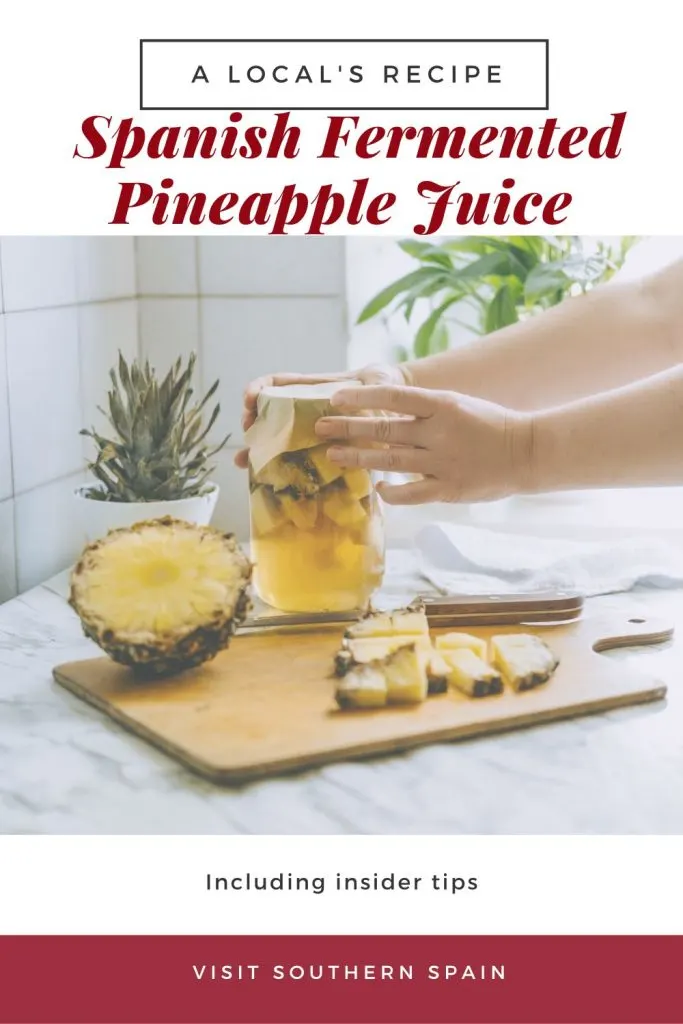Summer and Spring are the best seasons of the year for trying and making refreshing popular Spanish drinks.
One of them is fermented pineapple juice, or tepache de piña, a Hispanic drink where the pineapple is the main star.
Keep reading this article to learn how to make tepache, plus some extra tips for storing and serving.
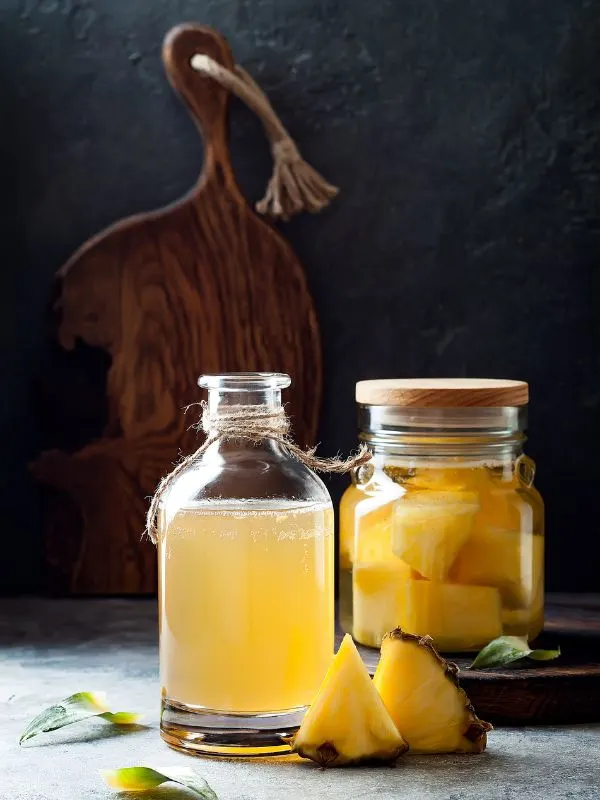
This post contains affiliate links. If you buy via them, I’ll earn a small commission which helps me to keep this blog running. As an Amazon Associate I earn from qualifying purchases. All opinions are my own.
Background of the Dish
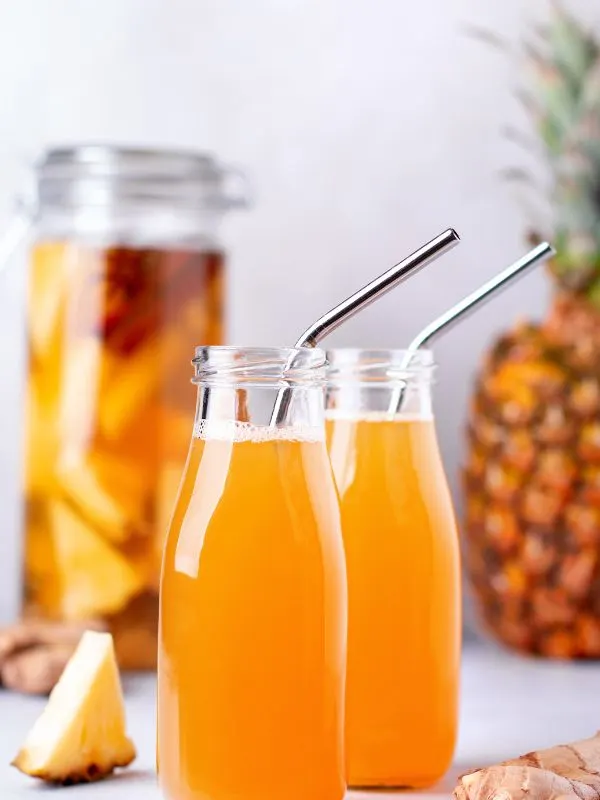
The fermented pineapple juice was created in Mexico before the 1400s, but it was made with corn.
The recipe went through some changes, and the tepache de piña was born: the current recipe has pineapple, water, piloncillo (or brown sugar), cloves, and cinnamon sticks.
Other famous Spanish drinks are Tinto de verano and Agua de Valencia, and those were created in Andalusian land.
Pin for later!
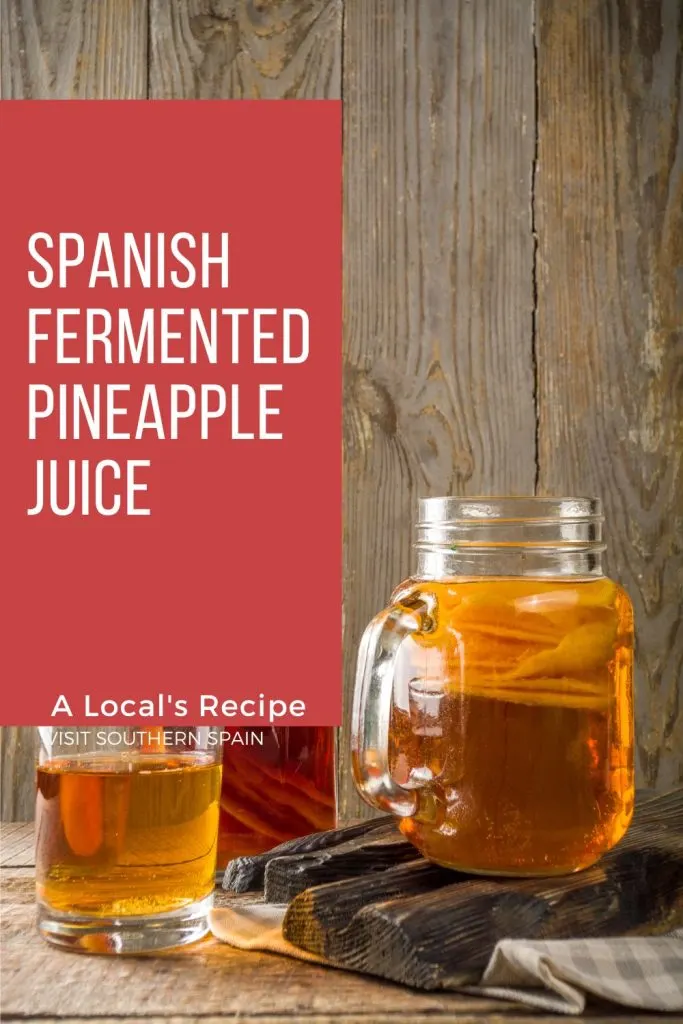
Things You’ll Need for the Fermented Pineapple Juice
To make the fermented pineapple juice you will need water, pineapple, clove, cinnamon sticks, and piloncillo (replaceable with brown sugar).
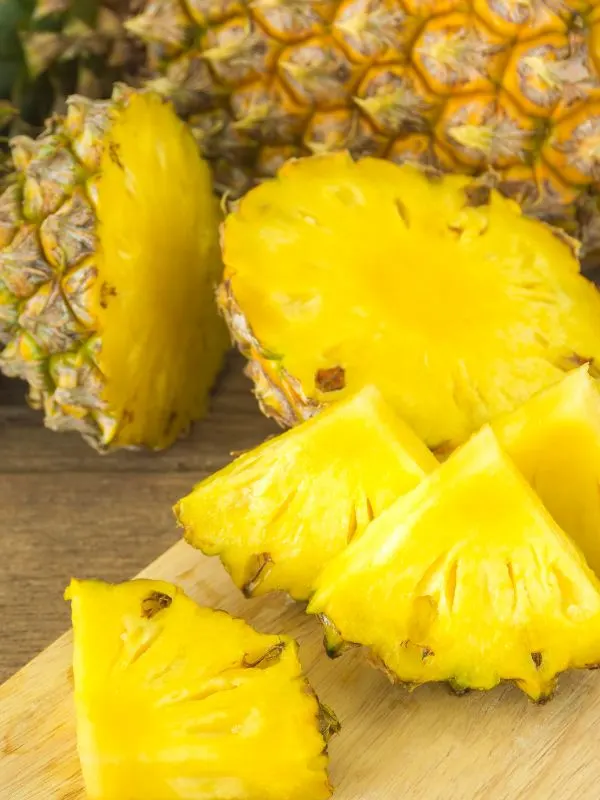
Ingredients
- 1 ripe pineapple
- 500gr piloncillo (or 2 1/4 cups-500gr brown sugar)
- 14 1/2 cups (3.5 liters of water)
- 2 cinnamon sticks
- 4 cloves
How to Make Fermented Pineapple Juice – Step by Step Guide
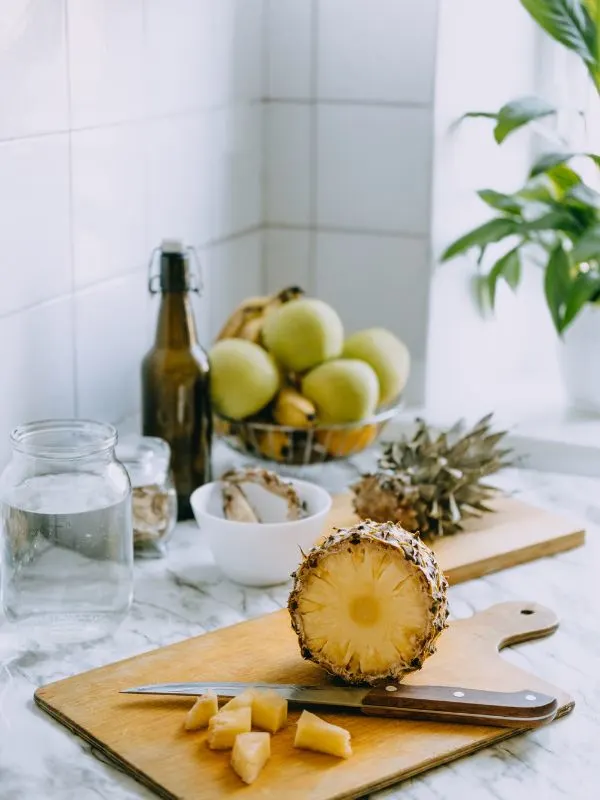
- To start making the tepache recipe you have to wash the pineapple very well before cutting it. It is better if you do it with the help of a brush to remove any dirt.
- After that, chop it into cubes, leaving the pineapple pieces with the skin on (it helps to give flavor).
- In a large pot, bring the water to a boil with the piloncillo, cinnamon, and cloves. Boil, occasionally stirring, for 10 minutes or until the piloncillo has dissolved (if it’s brown sugar this will happen faster, but still do it for 10 minutes).
- Then place that water in a large container or leave it to cool in the same pot. Also, add the pineapple pieces (with skin included)
- Cover the container with a kitchen cloth (or with plastic wrap, since the liquid should be at room temperature at this point) and seal the container with rubber bands. This will allow the container to be hermetically closed and the water will not be contaminated.
- Up next, place the container at room temperature and let it sit for 24 hours until it starts to ferment.
- After 24 hours went by, check how the fermented pineapple juice is going. Stir a bit with a spoon and cover again, leaving it at room temperature until fermented for another 24 hours.
- You will know that the Tepache de piña is ready when you see a light layer of white foam on top (it means that the fermentation is done).
- When that happens, pass the Spanish drink through a fine strainer and take it to a glass bottle or jar. Let it cool before serving or serve it with ice cubes.
Substitution of Ingredients
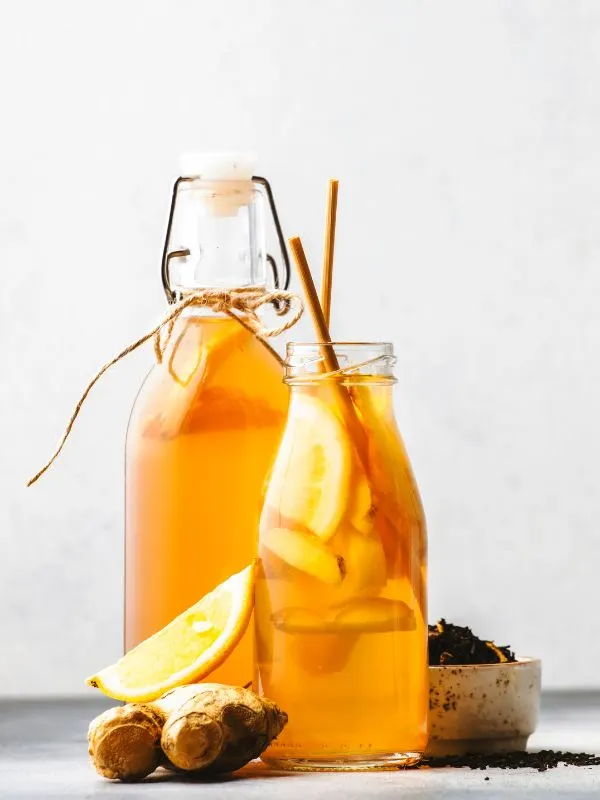
We don’t recommend making a lot of changes to the fermented pineapple juice, because it only calls for a few ingredients and all of them are essential to the recipe.
However, you can make this recipe with other fruits, like apples, strawberries, or mango are the more common versions.
You can also add ginger slices, lemons,s or oranges to make a drink that’s going to boost your immune system as well with its vitamins.
All fermented beverages have some level of alcohol, but if you want it to have a stronger flavor, you can replace one cup of water with one cup of beer.
Due to the fermentation, the fermented pineapple juice has a small percentage of alcohol (1.5% or less), but if you are looking for non-alcoholic Spanish drinks you can try the Spanish Horchata or Leche merengada.
Tips on Serving Fermented Pineapple Juice
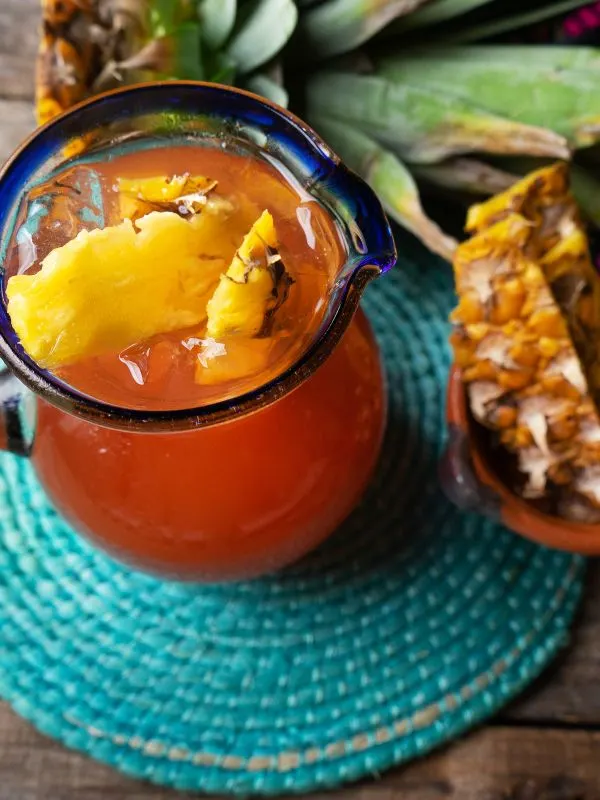
Contrary to other Spanish beverages, this one is meant to be served as a drink to have by itself, and not with a full meal.
Besides that, this traditional Spanish drink is at its best when you have it cold, so you can leave it in the fridge before drinking it, or add some ice cubes.
You can serve the fermented pineapple juice in any type of glass, and you can leave the piña cubes on each cup or remove it (it can get a bitter taste in some cases it is better to remove the pieces).
How to Store Fermented Pineapple Juice
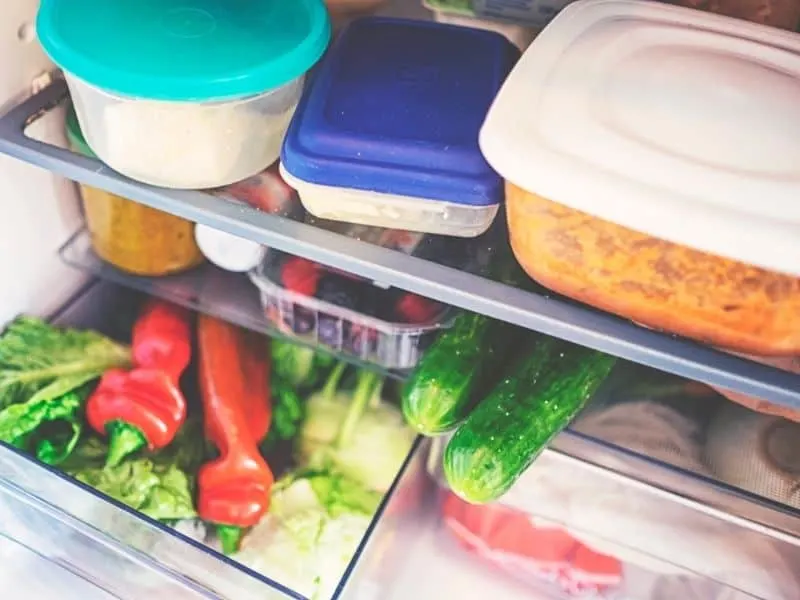
Unlike other Spanish drinks, pineapple tepache is not made to be stored for long, and you can’t freeze it.
The fermented pineapple juice can last up to 15 days in the fridge, as long as it is stored well in a bottle or jar with a lid.
If your tepache has a slimy texture or has some slimy bits, that means it has gone bad, and is best to throw it away.
Another sign that it has gone bad is if it has a bitter taste or it tastes like vinegar (in fact, if it is fermented for too long, it becomes vinegar).
Recipe Card: Fermented Pineapple Juice
Spanish Fermented Pineapple Juice Recipe

Summer and Spring are the best seasons of the year for trying and making refreshing popular Spanish drinks.
One of them is fermented pineapple juice, known as tepache de pina, a Hispanic drink where the pineapple is the main star.
Keep reading this article to learn how to make tepache, plus some extra tips for storing and serving.
Ingredients
- 1 ripe pineapple
- 500gr piloncillo (or 2 1/4 cups-500gr brown sugar)
- 14 1/2 cups (3.5 liters of water)
- 2 cinnamon sticks
- 4 cloves
Instructions
- Wash the pineapple very well before cutting it. Do it with the help of a brush to remove any dirt.
- Chop it into cubes, leaving pieces with the skin (it helps to give flavor).
- In a large pot, bring the water to a boil along with the piloncillo, cinnamon, and cloves. Boil, stirring occasionally, for 10 minutes or until the piloncillo has dissolved (if it's brown sugar this will happen faster, but still do it for 10 minutes).
- Place that water in a large container or leave it to cool in the same pot. Add the pineapple pieces (with skin included)
- Cover the container with a kitchen cloth (or with plastic wrap, since the liquid should be at room temperature before this) and seal the container with rubber bands. This will allow the container to be hermetically closed and the water will not be contaminated.
- Place the container at room temperature and let it sit for 24 hours until it starts to ferment.
- After 24 hours, check the content. Stir a bit with a spoon and cover again and leave at room temperature until fermented for another 24 hours.
- You will know that the pineapple tepache is ready when you see a light layer of white foam on top (it means that the fermentation is done).
- When that happens, pass the tepache drink through a fine strainer and take it to a bottle or glass jar. Let it cool before serving or serve it with ice cubes.
Notes
It is key to let the fermentation happen naturally, so leave your fermented pineapple juice at room temperature but well covered and not in a place that is too hot.
Don't let it ferment any longer, because instead of a fermented pineapple drink, you'll have a weird vinegar.
Nutrition Information
Yield
10Serving Size
1Amount Per Serving Calories 139Total Fat 1gSaturated Fat 1gCholesterol 0mgSodium 13mgCarbohydrates 36gFiber 1gSugar 33gProtein 1g
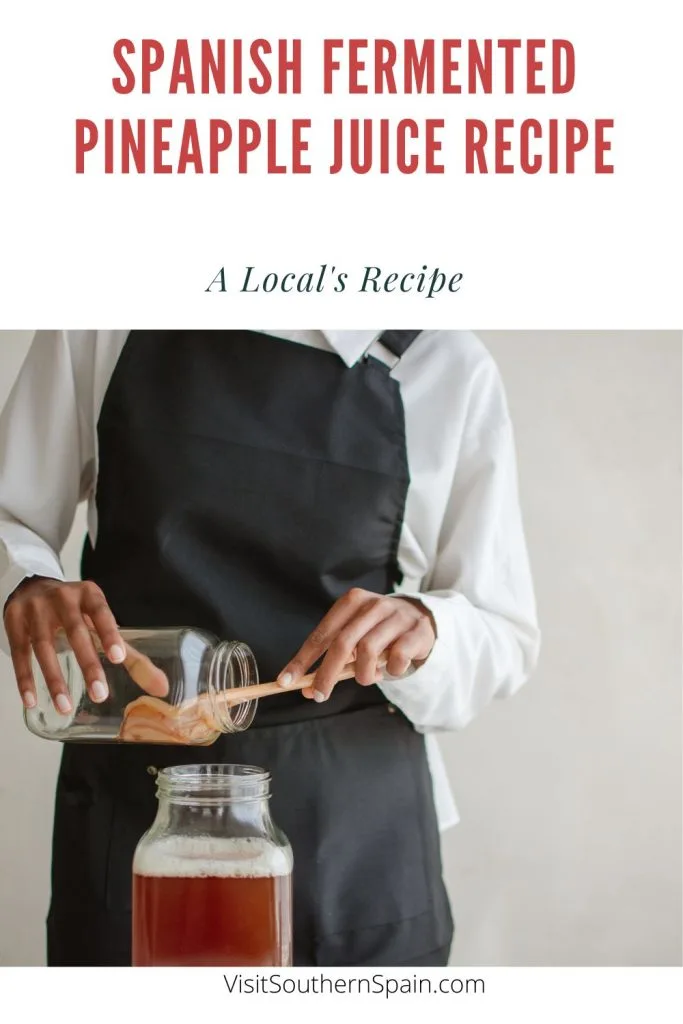
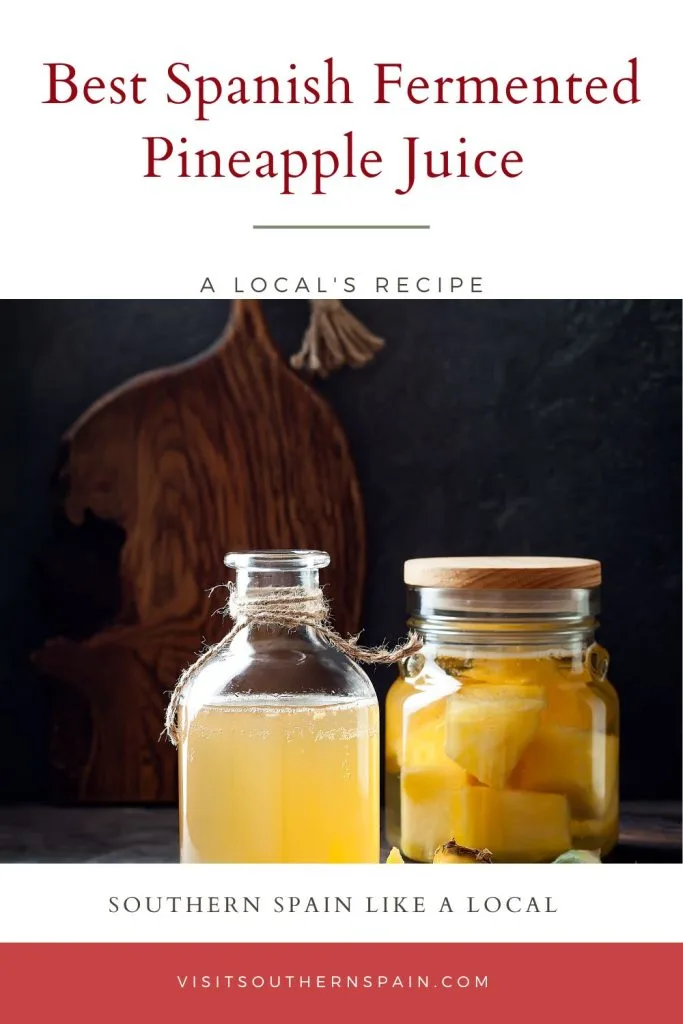

Hola, I’m Paulina! Together with my team, we are passionate about Southern Spain. Here we share all you need to know for great times in Southern Spain with the best places to visit, stay and, of course, the best food to eat.
Let’s dive in and explore Southern Spain’s outdoors, food and culture con pasión!

